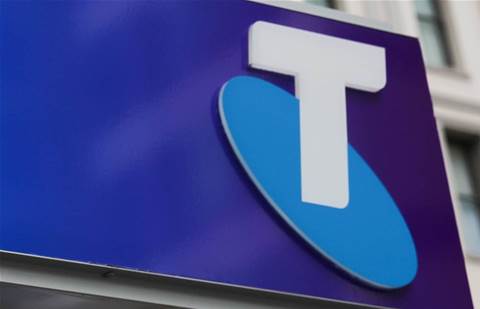Telstra has started a detailed review of its domestic enterprise business, which includes its underperforming network applications and services (NAS) portfolio.
Today the telco reported overall growth for the first half of the 2024 financial year, due to a strong mobile business and contributions from the consumer and small business unit and infrastructure business.
Its income for the half year was $11.7 billion, a 1.2 per cent increase on the same half in the year before. Net profit after tax was $1 billion, up 11.5 per cent from the same half in the previous year.
However, revenue from the enterprise fixed business was down 2.3 per cent to $1.73 billion, compared to the first half of FY23.
The enterprise fixed business includes data and connectivity (DAC), which “is performing as expected”, Telstra CEO Vicki Brady stated. DAC revenue fell by 10.2 per cent to $380 million, a decrease attributed to ARPU compression from competition, renewals and technology change.
The enterprise fixed business also includes NAS, which grew 0.1 per cent to $1.35 billion. NAS “is clearly a long way from where we need it to be”, Brady stated.
“We are undertaking a full review of the products and services we provide within enterprise and particularly our NAS portfolio to make sure they both meet the current and future needs of our customers and create shareholder value,” Brady stated.
“This includes addressing the cost base of our enterprise business, including resetting costs across each function supporting enterprise, particularly NAS, to optimise end to end delivery for customers.”
The review includes “how we fully leverage Versent to unlock the evolving customer demand for customer-led transformation solutions.” Versent accepted Telstra’s acquisition offer in October 2023.
Calling applications and professional services decline
Sitting under the NAS umbrella, calling applications revenue decreased 17.6 per cent to $210 million due to fixed product exits, including ISDN, and a market shift from traditional voice to integrated video and digital solutions.
NAS professional services income decreased by 12.4 per cent to $233 million due to a slower trading environment and large contracts in the prior period not repeating.
NAS products recording revenue growth included cloud applications, which increased by 16 per cent to $181 million. This was attributed to growth in demand for partner cloud products including Amazon Web Services and Microsoft Azure.
Managed services and maintenance revenue increased by 1.6 per cent to $384 million due to an increase in customers attaching cyber security services and service management.
Equipment sales increased by 12.2 per cent to $165 million, including on large strategic contracts.
Looking ahead
Telstra remains “absolutely committed to deliver for our enterprise customers”, Brady said.
“We expect professional and infrastructure services growth to return in time and are confident that we can navigate through this challenging period and set the business up for success.”
On costs, Brady said: “We have remained disciplined on reducing our costs, particularly considering the external economic environment. This discipline during the half delivered $64 million core fixed cost out, and cumulatively we've delivered $105 million since FY22.
While Telstra is “being challenged by cost pressure, we still expect to achieve the large majority of our cost out ambition by the end of FY25,” Brady stated.
Telstra CFO Michael Ackland said that “the level of higher ongoing cost pressure means more significant action is going to be required to achieve this than previously expected.”
AI usage within Telstra
Brady noted that Telstra is “using AI to improve half of our key processes, including to automatically detect and resolve fixed services faults, and to solve customer issues faster.”
Telstra recently announced that it expanded the use of two internal customer service generative AI solutions following successful pilots.
IoT revenue increased by 2.2 per cent to $142 million, with services in operation increasing by 1.5 million (including 783,000 in the half) to 7.9 million.







_(21).jpg&h=142&w=230&c=1&s=1)
.jpg&h=142&w=230&c=1&s=1)



.jpg&w=100&c=1&s=0)
_(8).jpg&w=100&c=1&s=0)










